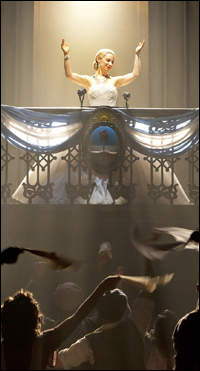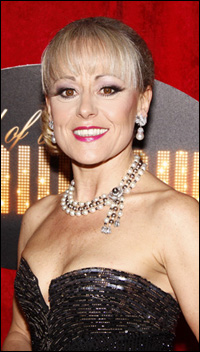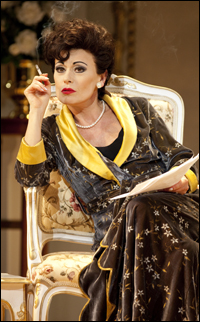
*
A couple of short and, sadly, short-lived divas arrived on Broadway three days apart amid the April showers this year - the 5-foot-5-inch Eva Perón of Evita at the Marquis Theatre, and the 4-foot-11-inch Judy Garland of End of the Rainbow at the Belasco — both of them in Broadway-debuting, Olivier Award–nominated performances from London.
Elena Roger (at 5.02 inches) and Tracie Bennett (at 5 feet 6 inches) — the latter now a 2012 Tony Award nominee as Best Actress in a Play — do some of the heaviest emotional lifting of the theatrical season as the power-propelled Perón and the drug-ravaged Garland, respectively. Musically, it's "Don't cry for me Argentina…" vs. "Weep no more, my lady…"
That latter line, from the Garland standard "Rock-a-Bye Your Baby With a Dixie Melody," served as the title of the book her fifth husband, Mickey Deans, co-wrote about the ragged end of his last meal-ticket, who, at 47, went the way of most troubled music legends by overdosing on June 22, 1969, under his reckless supervision.
María Eva Duarte married Colonel Juan Perón in 1945 — a year before he was elected Argentina's president — and was first lady until cervical cancer claimed her, at 33, on July 26, 1952. After lo these 60 years, the melody lingers on — along with that glorious, Tony-winning batch of songs Andrew Lloyd Webber and Tim Rice wrote in 1979; now, 33 years later, they're back on Broadway with a stronger Argentinean flavor.
 |
||
| Roger in Evita. |
||
| photo by Richard Termine |
What was hard was making herself understood in English, but three coaches have brought her up to intelligible speed (as long as she steers clear of words like "bureaucracy" and "Madonna"). "We keep some of my accent, but it must be understood. That's what we want, so all the time I'm conscious of what I'm doing."
With the accent comes a history with her character. Roger grew up in a family always debating Perón pros and cons. "Actually, I'm picking her side. She doesn't always do the right thing, but because it's me doing her, I kinda understand. All the things she did for poor people, I feel, she did with her heart because she came from poverty."
 |
||
| Tracie Bennett |
||
| Photo by Joseph Marzullo/WENN |
Peter Quilter's play-with-music covers the same charred ground as the Deans book, emphasizing the out-of-control, off-stage Garland struggling to stay in the game.
When the singer does mount the stage (i.e., The Talk of the Town in London) and performs eight songs over the course of the play, Bennett rises to that awesome occasion, approximating The Voice with an eerie exactness that she insists is acted.
"Being an actress by definition and not a singer," says Bennett, "I find my way into a song as the character I'm playing." Thus, Garland's decline depends on how her records are stacked — from the elegant Judy ("Just in Time") to the rejected Judy ("The Man That Got Away") to the befuddled Judy ("When You're Smiling") to the performing trainwreck Judy, (a Ritalin-ruined "Come Rain or Come Shine").
"I treated every single song like a soliloquy and looked at the lyrics and made it an acting job. I wanted to play a human being. I didn't think about Judy Garland. I looked at the play, did as much research as I could and mixed it with imagination. I talked to addicts and machinated their personal stories into the performance. How much has the drugs taken hold? Who's the real person underneath that? Who's, then, the Frances Gumm [Judy's real name] underneath the Judy Garland?"
 |
||
| Bennett in End of the Rainbow. |
||
| photo by Carol Rosegg |
"I won't please everybody, because everybody's got their own favorite kind of Judy. They want their Dorothys, their Esthers, the innocence. She wasn't that at the end."
Footage of that doomed London gig prompted Bennett to get herself Garland-gaunt and walk in a slow, tentative fashion, but director Terry Johnson brought her back from the brink of her research and into a performable pattern.
"Gently, Terry said, 'It's the connection between you and the audience. You've got to look [them] in the eyes.' It's really been hard, that bit. You can see people responding to you, which I never have before because I was trained not to look at people. You have to connect as if you're singing to that one person.... It freaked me out at first, but that's my job."
(This feature appears in the May 2012 issue of Playbill magazine.)









